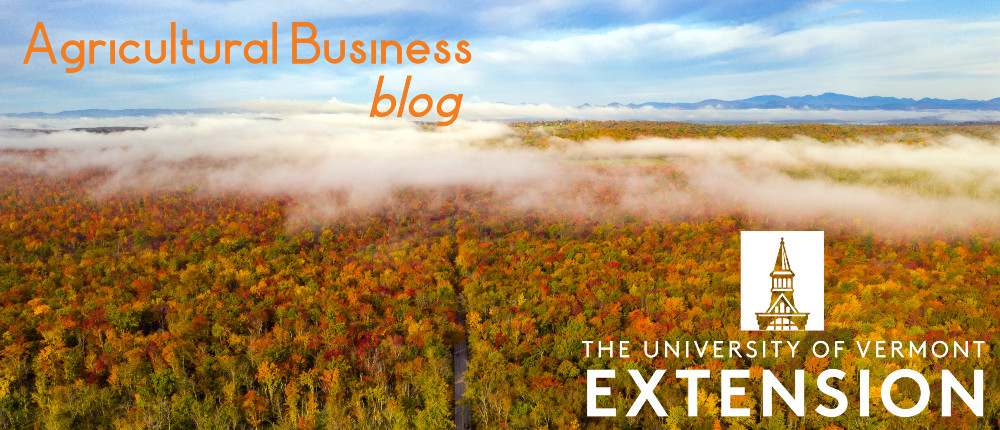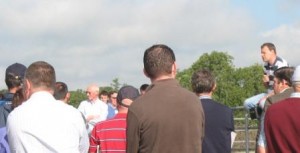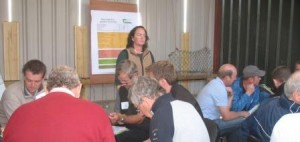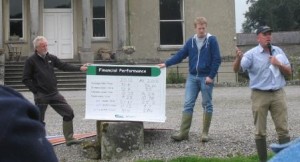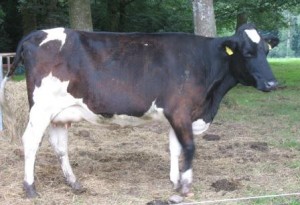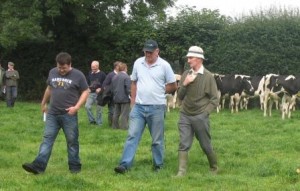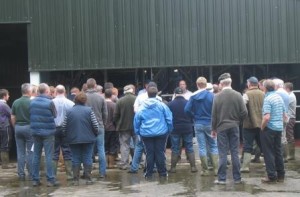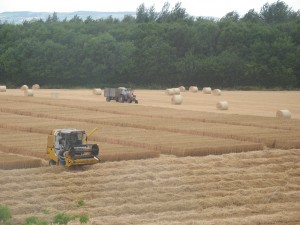This has been quite a wet week. Some real rain that has broken the drought. Most of the fields have greened back up. There is still concern about the quantity of forage (fodder) that will be available for the winter.
I attended a dairy advisor training the other day, part of it was at a dairy farm near the town of Portlaoise. John, a young fellow who has been operating the farm for 12 years, has a larger than average farm, with about 150 mature dairy cows, plus youngstock. He has 210 acres, all in one block (which is quite unusual- most farms have parcels spread out over quite an area.) The land is flat, with good access to all the paddocks (for cows and equipment), with water in each paddock.
He has been planning on a 4 month winter feeding season. This spring he, like most farmers here, ran out of grass silage and round bales. Luckily, his neighbor had enough to sell. Now he is thinking of having enough feed for a longer winter, and trying to build his inventory (over a couple of years) to cover 5 months.

Friesians and Jerseys at John’s farm near Portlaoise, Ireland
The 210 A usually provides enough feed. His farm grows grass, perennial ryegrass. Each field will be both harvested for haylage (by a contractor) and grazed. He is averaging about 6 ton/A of dry matter now, and has a goal of getting up to 7. (Well managed grass in Vermont can be up over 5 T/A. Ireland has a milder climate, with usually no snow, and cows can start grazing late in March. The perennial ryegrass- sometimes with clover- is a real high-yielding crop.) John has been working on getting the pH, phosphorus and potash levels a bit higher, but is having a challenge getting the levels to go up.
John is hoping to put more cows on when the EU dairy marketing quota ends in March, 2015. Last year, he shipped about 10,500 lbs/cow, with 3.5% protein and 4.2% fat. (An average herd would be about 12,500 lbs/cow with 3.4% protein and 4.2% fat.) The herd is mainly Friesian (a cousin to the Holstein), with some Jerseys and some Holstein- Jersey crossbreds (that he will breed back to Friesians). He fed a little less than a ton of concentrate per cow last year. And he was not feeding grain to his youngstock. He thought he might be a little over his milk quota, so he fed lots of milk to the calves, no grain. He has a seasonal herd, so his herd started freshening on Feb 6, and half of them had calved by the 19th!

6-month old calves, John’s farm near Portlaoise, Ireland
The day we were there, the cows were giving 41 lbs of milk on all the pasture they could eat and 4.5 lbs of grain. This is a different system than we are used to in Vermont, the Irish goal is to feed that grass and keep total costs down.
Last week I mentioned the winter barley harvest. Now it is in the middle of the harvest, waiting for some dry weather to get out there and finish combining. There is quite a bit of straw in the fields now, most of it in big round or the huge square bales. I am guessing that as much of it as possible will be put under cover, because if the forage yields are low, there will be buyers looking to feed that straw. They say that the Spring barley will be next to harvest. Certain varieties of barley will be bought by malters who will prepare it for fermentation by brewers or distillers. Other barleys will be used for roasting to go into the several stouts that Ireland is famous for (like Guinness), roasted barley gives it the black color and the roasted taste. Then quite a bit of the barley will be fed to livestock, either dried, or maybe treated with proprionic acid for putting into a bunker silo.
Topics of discussion amongst the 40 advisors were: How to get the grass to grow? What to do on a farm with not enough silage. And cash-flow management.
How to get the grass to grow? It needs rain, heat, time, fertility, and grass. There is moisture now, and heat. The thought was that given some time, if a farmer has fertilized, the grass will grow. Most of the commercial nitrogen that goes on is Calcium Ammonium Nitrate, which will not be lost by volatilization (like urea can be lost). A challenge now is the days getting shorter, and farmers are hesitant to make hay or haylage in September because they want some leaf on the grass going into the winter. Grass stays green through the winter here. One concern is that people do not over-graze now when forage is tight, but leave a good stubble, so that there is grass there to start regrowing, if there is no green showing, the plant has to start from square one.
What to do on a farm with not enough silage? Line up feed to buy, or cull some cows or heifers early. The thought was that with a shortage of feed, it hardly makes sense to keep cull cows around to put more weight on them. Get rid of them sooner rather than later.
And cash-flow management. Sit down with the books. Total up income and expense for the year to date, make some estimates for the rest of the year, and see what it looks like. Now in the fall is when income taxes for 2012 are due, so farmers will be needing cash to pay that. And if there are open accounts from feed purchased in the spring- coops are beginning to withhold money from milk checks to pay for feed bought through them, so some milk checks are looking a bit thin now.
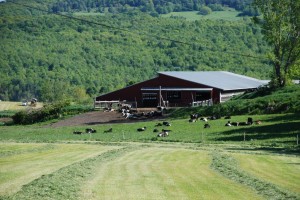 The UVM Extension Farm Viability team regularly meets farm managers for the first time with the goal of asking the right questions that will enable everyone to reflect on the business. We have just posted the Dairy SWOT Analysis Worksheet that we take out to the farm to guide the conversations. The same sheet can be completed by dairy managers who want to evaluate their business by themselves. This worksheet helps break the ice with basic farm questions while making sure you catch the details of feed, facilities, services and personality that impact the business.
The UVM Extension Farm Viability team regularly meets farm managers for the first time with the goal of asking the right questions that will enable everyone to reflect on the business. We have just posted the Dairy SWOT Analysis Worksheet that we take out to the farm to guide the conversations. The same sheet can be completed by dairy managers who want to evaluate their business by themselves. This worksheet helps break the ice with basic farm questions while making sure you catch the details of feed, facilities, services and personality that impact the business.